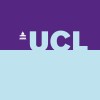
Transcranial Alternating Current Stimulation (tACS) to Improve Motor Skill Acquisition in Stroke...
StrokeHand motor function is often severely affected in stroke patients and its recovery is one primary goal in stroke rehabilitative treatment programs. Recently, theta-gamma transcranial alternating current stimulation (tACS) has been shown to enhance motor skill acquisition in healthy individuals. The aim of the present study is to examine the effect of theta-gamma tACS on motor skill acquisition in chronic stroke patients.

Enhancing Resilience in Young Stroke Survivors With Res-ET
ResilienceStrokeThe proposed pilot study will explore the feasibility and preliminary impacts of a 6-week at-home group delivered inspiratory muscle strength training (IMST) exercise intervention on resilience in young stroke survivors. Resilience Exercise Training (Res-ET) intervention on young stroke survivors will assess feasibility of Res-ET and preliminary changes in resilience on young stroke survivors using a quasi-experimental one-group pretest-posttest design within the RE-AIM framework. The connection between resilience and exercise has not been clearly identified in literature, and there is no literature supporting IMST on resilience in young stroke survivors. The Res-ET intervention in young stroke survivors may serve as a pragmatic and novel approach to increase resilience while also increasing physiological and psychosocial well-being of young stroke survivors. Aim 1. Test the feasibility (recruitment, retention, participation, and acceptability) of Res-ET intervention in a sample of young stroke survivors having had a stroke between the age of 18 - 50, AND who experienced a stroke within the last 6 months to 55 years of age AND have been cleared by a physician to participate in IMST exercise. Aim 2. Assess the efficacy potential of Res-ET intervention on resilience, and preliminary direction and magnitude of psychosocial and physiological outcomes in young stroke survivors pre/post Res-ET intervention. Psychosocial outcome measures consist of; positive affect, self-efficacy, meaning/purpose, physical function, fatigue, and social satisfaction. Physiological outcome measures consist of, pulmonary function, physical activity, biometrics, and daily movement. Aim 3. Collect qualitative data to assess acceptability and usability of Res-ET. Data will be collected through interviews and questionnaires about Res-ET feasibility, perceived utility, and satisfaction of the intervention. Perceived changes to resilience, functional capacity/movement (ADL's), and well-being will be recorded, transcribed, and thematically coded

Clinical Feasibility of ROBERT-SAS in Severely Impaired Stroke Patients
StrokeRobotic training can be used to provide intensive training during the (early phases of) rehabilitation of a stroke. ROBERT®-SAS training is designed to create an active and intensive training tool for the rehabilitation of the lower extremity of stroke patients. Currently this has only be tested in a lab-based setting, which showed that is was feasible and could be executed while still being comfortable for the patient. The next step will be implementing the device in a clinical setting. Therefore, aims the current study to assess the feasibility of ROBERT®-SAS training in clinical setting, in acute stroke patients.

Auditory Rehabilitation in Stroke Patients With Auditory Processing Disorders
Auditory Processing DisorderCentral1 moreThis study aimed to evaluate long term benefits in speech reception in noise, after daily 10 week use of an assisting listening device (personal frequency-modulates systems) , in non-aphasic stroke patients with auditory processing deficits.

A Study to Test the SENSE Device in Patients With Intracranial Hemorrhage
Intracerebral HemorrhageStroke2 moreThe purpose of this research study is to find out whether a device for monitoring bleeding in patients with acute hemorrhagic stroke will show similar findings as CT scans performed to evaluate the stroke.

Noninvasive Vagal Nerve Stimulation for Arm Recovery After Stroke
StrokeThis study will find out whether electrical stimulation of a nerve called the "vagus" nerve is acceptable for patients undergoing physiotherapy for arm weakness after a stroke. 20 patients will be recruited if they had a stroke between 4 and 48 months previously and have been left with reduced function in the affected arm. Patients will receive 3 sessions of physiotherapy per week for 6 weeks. Each session will last 1 hour during which the patient will be asked to perform specific movements e.g. shuffling cards, reaching for a shelf. With each arm movement the therapist will turn on a stimulator which is worn clipped to the patients ear. This will deliver a short burst of electricity creating a mild tingling sensation. At the end of the session, the stimulator will be removed and the patient will be asked to rate the level of any discomfort or fatigue they experienced as well as any other side effects. The therapist will also record whether the stimulator device interfered with the therapy in any way. A heart tracing will be performed at each visit to check the heart rhythm. At the start and end of the 6 week course of physiotherapy, patients arm weakness and level of arm function will be assessed, as well as their general levels of fatigue, mood and quality of life. These will be reassessed at 1 month and 6 months after the course of physiotherapy has ended. The investigators will also interview patients to establish how they found the treatment itself. If the vagal nerve stimulation combined with physiotherapy is acceptable to patients and therapists and there are no safety concerns, the investigators will plan a larger trial of this treatment in stroke patients.

Fit for Function: A Community Wellness Program for Persons With Stroke
StrokeThe purpose of this study is to evaluate whether persons with stroke participating in a 12-week community based wellness program for persons who have had a stroke, experience improved mobility (6 Minute Walk Test), balance, (The Short Portable Performance Test and Timed Up and Go), strength (JAMAR hand grip dynamometry), level of physical activity (Rapid Assessment of Physical Activity), reintegration in community (Reintegration into Normal Living Index), self efficacy (Patient Activation Measure) and Quality of Life (Stroke Specific Quality of Life Scale) compared to persons who do not participate in the program.

Task-oriented Training for Stroke: Impact on Function Mobility
Cerebrovascular AccidentStrokeResidual neurological deficits from stroke lead to gait inefficiencies, resulting in an extremely high energy cost of movement and contributing to overall disability and lower quality of life. Therefore, interventions targeting movement economy should be developed for those in the chronic phase of stroke recovery. This study is designed to compare the effect of two distinctly different exercise paradigms (a higher-intensity treadmill training program and a lower-intensity group exercise program) on economy of movement during over-ground walking and activities of daily living, as well as the extent to which gains in muscular strength, muscular endurance, and balance predict changes in movement economy.

Evaluation of the Stroke Caregiver Education and Support Program
StrokeThe study will be evaluating to a 4 week education and support program for stroke caregivers. The 4 week program will provide education, information, and strategies for dealing with areas that caregivers may find challenging in their caregiving role. The study will evaluate the effectiveness of the program to decrease the caregiver's stress, strain and burden, increase the caregiver's knowledge of strategies and community services and increase their role satisfaction as a stroke caregiver and quality of life two weeks after the program and 6 months after the program.

Ankle Robotics Training After Stroke
Seated Treadmill TrainingTreadmill Locomotor-based Training1 moreVeterans and other Americans who survive stroke often face disabling motor impairments that impede performance of activities of daily living and limit free-living activity. Prominent among these are diminished walking and balance functions, which not only foster a sedentary lifestyle and physical deconditioning, but also increase the risk of injuries due to falls. Recent research has demonstrated how motor learning based interventions can modify brain activity and improve motor functions in persons with stroke. Now there is a major research opportunity to advance the effectiveness of these interventions by applying new robotics technologies to improve control of essential functions such as gait and balance. One critical area for performance of walking and standing balance is the control of the ankles, as they are a major conduit of mechanical power in gait and also modulate torques affecting the motion of the whole body center of mass when balancing. Thus the current proposal is designed to investigate two approaches for using an impedance controlled ankle robot to improve gait and balance among stroke survivors with chronic lower extremity weakness. One approach uses the ankle robot in a seated visuomotor training program that focuses has subjects play video games with the weaker ankle to improve paretic ankle motor control that may carry over to gait and balance functions. The other approach uses task-specific gait training by integrating use of the ankle robot during treadmill exercise training to assess effects on the same functions. The effectiveness of both robotics approaches will be compared to that of a treadmill exercise program without robotics.
